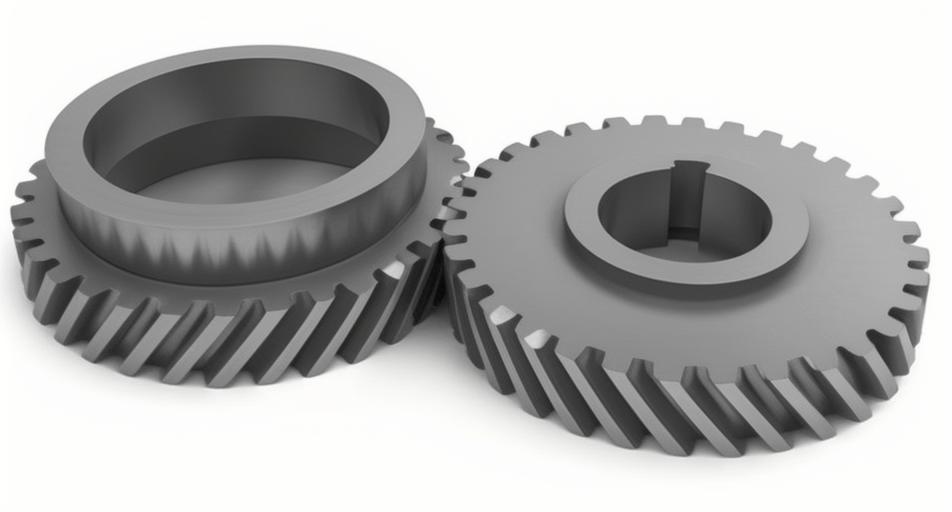Helical gear is widely used in various industries due to their ability to transmit power more smoothly and quietly compared to spur gear. The unique design of helical gear, with their angled teeth, allows for gradual engagement, which reduces shock loads and noise. To further enhance the efficiency and performance of helical gear, advanced design techniques and manufacturing processes have been developed. This article explores these advanced techniques and their impact on helical gear efficiency.

Introduction
Helical gear offers several advantages over other types of gears, including better load distribution, higher load-carrying capacity, and smoother operation. However, achieving these benefits requires precise design and manufacturing. Advanced techniques in gear design and production can significantly improve the efficiency and longevity of helical gear, making them more suitable for demanding applications in automotive, aerospace, and industrial machinery.
Advanced Design Techniques
Optimized Gear Geometry
Optimizing the geometry of helical gear is crucial for enhancing their efficiency. Key parameters include helix angle, pressure angle, and module.
| Design Parameter | Impact on Efficiency |
|---|---|
| Helix Angle | Improves load distribution, reduces noise |
| Pressure Angle | Balances contact stress, improves strength |
| Module | Optimizes gear size for specific applications |
Optimized helical gear geometry ensures better meshing, reduces friction, and enhances overall gear performance.
Profile Modification
Profile modification involves altering helical gear tooth profile to improve load distribution and reduce stress concentrations.
| Modification Type | Benefits |
|---|---|
| Tip Relief | Reduces stress at tooth tips, enhances life |
| Crowning | Compensates for misalignment, reduces noise |
| Lead Correction | Ensures uniform load distribution, improves efficiency |
Profile modifications are tailored to specific operating conditions, enhancing helical gear reliability and efficiency.
Finite Element Analysis (FEA)
Using Finite Element Analysis (FEA) in the design phase allows engineers to simulate and analyze helical gear performance under various load conditions.
| FEA Application | Advantages |
|---|---|
| Stress Analysis | Identifies high-stress areas, guides design improvements |
| Thermal Analysis | Evaluates temperature effects, optimizes cooling strategies |
| Vibration Analysis | Predicts vibration patterns, aids in noise reduction |
FEA helps in optimizing helical gear design for better performance and durability.
Advanced Manufacturing Processes
Precision Machining
Precision machining techniques, such as CNC milling and grinding, produce helical gear with high accuracy and superior surface finish.
| Machining Technique | Benefits |
|---|---|
| CNC Milling | High precision, complex geometries |
| Grinding | Superior surface finish, reduced friction |
| Hobbing | Efficient production, accurate tooth profiles |
Precision machining ensures that helical gear meet stringent quality standards, contributing to enhanced efficiency.
Heat Treatment
Heat treatment processes, such as carburizing, nitriding, and induction hardening, improve the surface hardness and wear resistance of helical gear.
| Heat Treatment Type | Benefits |
|---|---|
| Carburizing | Increases surface hardness, improves wear resistance |
| Nitriding | Enhances surface hardness, adds corrosion resistance |
| Induction Hardening | Provides localized hardening, improves fatigue strength |
Heat treatments enhance the durability and performance of helical gear, leading to longer service life.
Advanced Coatings
Applying advanced coatings, such as PVD, CVD, and DLC (Diamond-Like Carbon), can significantly reduce friction and wear.
| Coating Type | Benefits |
|---|---|
| PVD (Physical Vapor Deposition) | High hardness, low friction, excellent adhesion |
| CVD (Chemical Vapor Deposition) | High wear resistance, good chemical stability |
| DLC (Diamond-Like Carbon) | Extremely low friction, high wear resistance |
Advanced coatings provide a protective layer that enhances gear performance and efficiency.
Case Studies
- Automotive Industry: A major automotive manufacturer implemented optimized gear geometry and advanced coatings in their transmission systems. The result was a significant reduction in noise and an increase in fuel efficiency due to smoother power transmission.
- Aerospace Industry: In aerospace applications, precision machining and FEA were used to design helical gear for jet engines. These gears exhibited superior performance under high-stress conditions, contributing to improved engine efficiency and reliability.
- Industrial Machinery: An industrial machinery company adopted profile modification and heat treatment techniques for their heavy-duty gearboxes. This led to a substantial improvement in load-carrying capacity and a reduction in maintenance requirements.
Benefits of Advanced Design and Manufacturing Techniques
Improved Efficiency
Advanced design techniques, such as optimized geometry and profile modification, reduce friction and improve load distribution, leading to higher efficiency.
| Improvement Area | Efficiency Benefit |
|---|---|
| Reduced Friction | Lower energy losses, smoother operation |
| Better Load Distribution | Enhanced power transmission, reduced wear |
| Higher Precision | More accurate meshing, improved performance |
Enhanced efficiency translates to better performance and lower operational costs.
Increased Durability
Heat treatments and advanced coatings improve the wear resistance and surface hardness of helical gear, extending their operational life.
| Improvement Area | Durability Benefit |
|---|---|
| Wear Resistance | Longer gear life, reduced maintenance |
| Surface Hardness | Enhanced load-carrying capacity |
| Corrosion Resistance | Better performance in harsh environments |
Increased durability ensures reliable operation and reduces the need for frequent replacements.
Reduced Noise and Vibration
Optimized design and precision manufacturing reduce noise and vibration, enhancing operator comfort and system performance.
| Improvement Area | Noise/Vibration Benefit |
|---|---|
| Smoother Meshing | Lower noise levels, improved comfort |
| Reduced Vibrations | Better operational stability, less wear |
| Advanced Lubrication | Quieter operation, reduced friction |
Reduced noise and vibration contribute to a more pleasant working environment and better overall system performance.
Conclusion
Advanced design techniques and manufacturing processes play a crucial role in enhancing the efficiency and performance of helical gear. By optimizing gear geometry, implementing profile modifications, utilizing precision machining, applying heat treatments, and using advanced coatings, it is possible to achieve significant improvements in gear efficiency, durability, and noise reduction. These advancements ensure that helical gear can meet the demands of modern high-performance applications, providing reliable and efficient power transmission.
